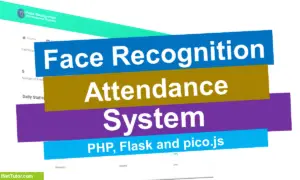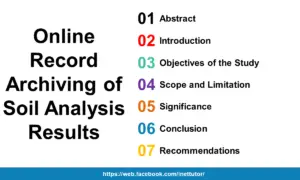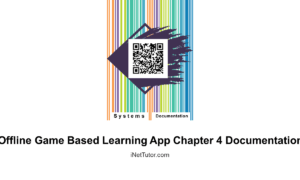Arduino Based Flood Monitoring with SMS Notification
Introduction
The project entitled Arduino Based Flood Monitoring with SMS Notification is a combination of hardware and software components which can monitor the water level using Arduino and at the same time it has a web admin panel that stores the record and sends SMS to the barangay/city officials.
This project is recommended to deploy into the flood prone areas such as the places that are near to rivers and coastal areas. Flood prone areas are populated areas and there is no early warning system or device that can notify its residences and officials, that is why the researchers decided to conduct a study and develop a system that can address the issue and can save lives at the same time.
Objectives of the Study
The general objective of this project is to design a flood monitoring system in Arduino with software components that can store the data captured from the sensors.
Specifically, the study aims to:
- To record and archive the data from sensors to create statistical report that will be the basis for decision making.
- To integrate the hardware component to the software components of the project.
- To provide an early warning system for the officials of the city and barangay to notify their residents about the water level in the flood prone areas.
Beneficiaries of the Study
City/Barangay Officials – this project is very important to the city and barangay council, with this project they can monitor the water level and can notify and inform their residents about the danger of flood.
Residents – they will be informed of the upcoming flood and can prepare for evacuation if necessary.
Future Researchers – the future researchers who want to conduct the same study can use this material to further enhance and develop the project.
Technologies Used
Hardware Components
Arduino Uno – is a microcontroller board based on the ATmega328P (datasheet). It has 14 digital input/output pins (of which 6 can be used as PWM outputs), 6 analog inputs, a 16 MHz quartz crystal, a USB connection, a power jack, an ICSP header and a reset button. It contains everything needed to support the microcontroller; simply connect it to a computer with a USB cable or power it with a AC-to-DC adapter or battery to get started.
https://store.arduino.cc/usa/arduino-uno-rev3
Water Level Sensor – Water Sensor water level sensor is an easy-to-use, cost-effective high level/drop recognition sensor, which is obtained by having a series of parallel wires exposed traces measured droplets/water volume in order to determine the water level. Easy to complete water to analog signal conversion and output analog values can be directly read Arduino development board to achieve the level alarm effect.
https://www.techtonics.in/products/water-level-sensor-depth-of-detection-water-sensor-for-arduino
Arduino GSM Shield – The Arduino GSM shield allows an Arduino board to connect to the internet, send and receive SMS, and make voice calls using the GSM library.
https://www.arduino.cc/en/Guide/ArduinoGSMShield
Software Components
PHP 7 – PHP 7 is a major release of PHP programming language and is touted to be a revolution in the way web applications can be developed and delivered for mobile to enterprises and the cloud.
https://www.tutorialspoint.com/php7/php7_introduction.htm
MySQL – MySQL is a freely available open source Relational Database Management System (RDBMS) that uses Structured Query Language (SQL). SQL is the most popular language for adding, accessing and managing content in a database.
https://www.siteground.com/tutorials/php-mysql/mysql/
Bootstrap 4 – Bootstrap is an open source toolkit for developing with HTML, CSS, and JS. Quickly prototype your ideas or build your entire app with our Sass variables and mixins, responsive grid system, extensive prebuilt components, and powerful plugins built on jQuery.
https://getbootstrap.com/
iTexMo SMS API – Affordable 2 Way SMS APIs in the Philippines
https://www.itexmo.com/Developers/
Software/System Development Procedures
The process started with the Initial Requirements where the researchers gathered data from the respondents which are the barangay and city officials. After the data gathering, the Initial design of the system followed, then prototyping, the customer evaluation, reviews and update from which the client suggested changes and updates for the system. Only after the client has been satisfied of the developed system that the researchers (developer) implemented the system. Then the testing phase for the users and client and the maintenance phase were executed to clean and check the system in order to evade any error when the system would be in full use.
You may visit our facebook page for more information, inquiries and comments.
Hire our team to do the project.


